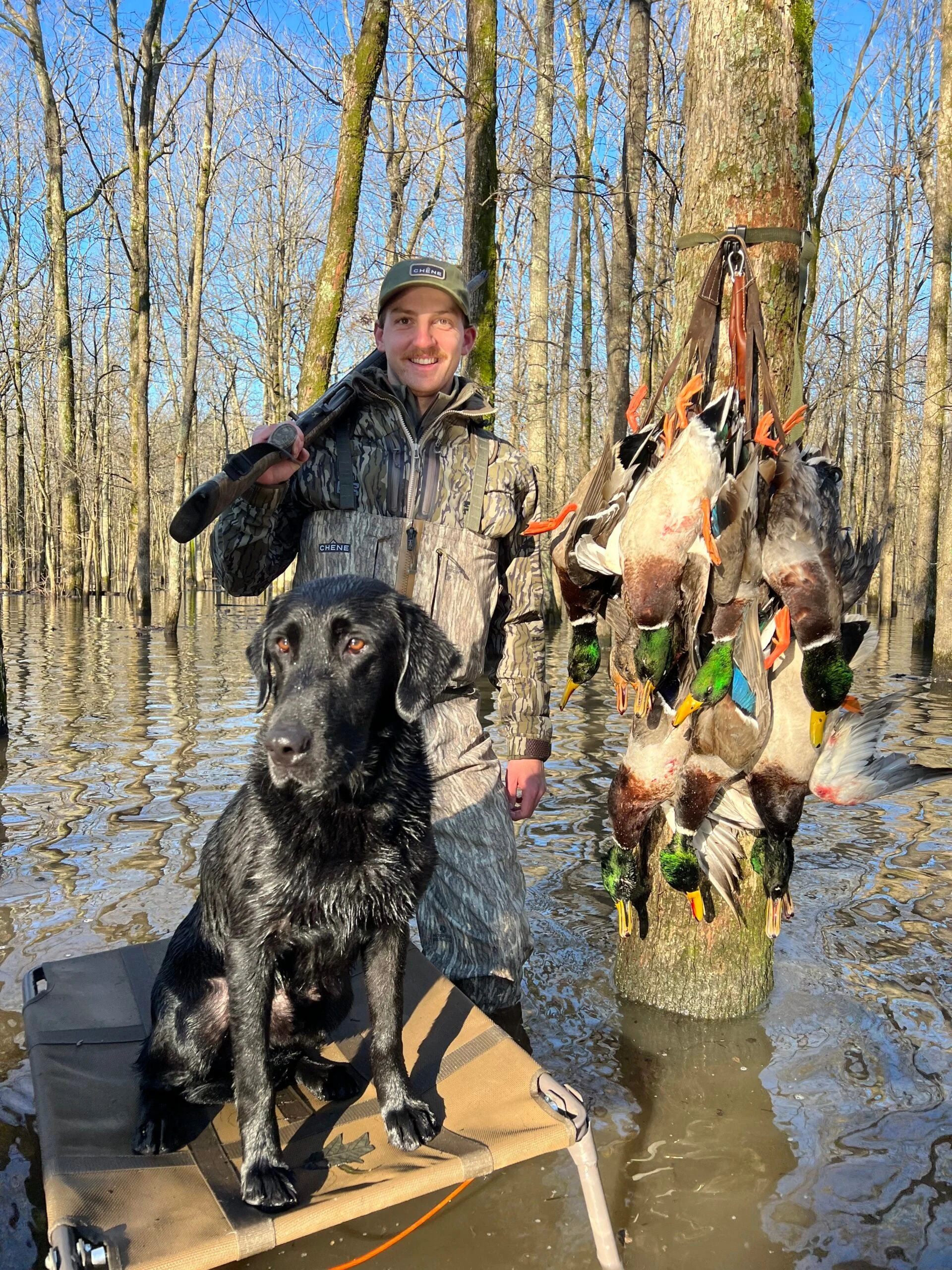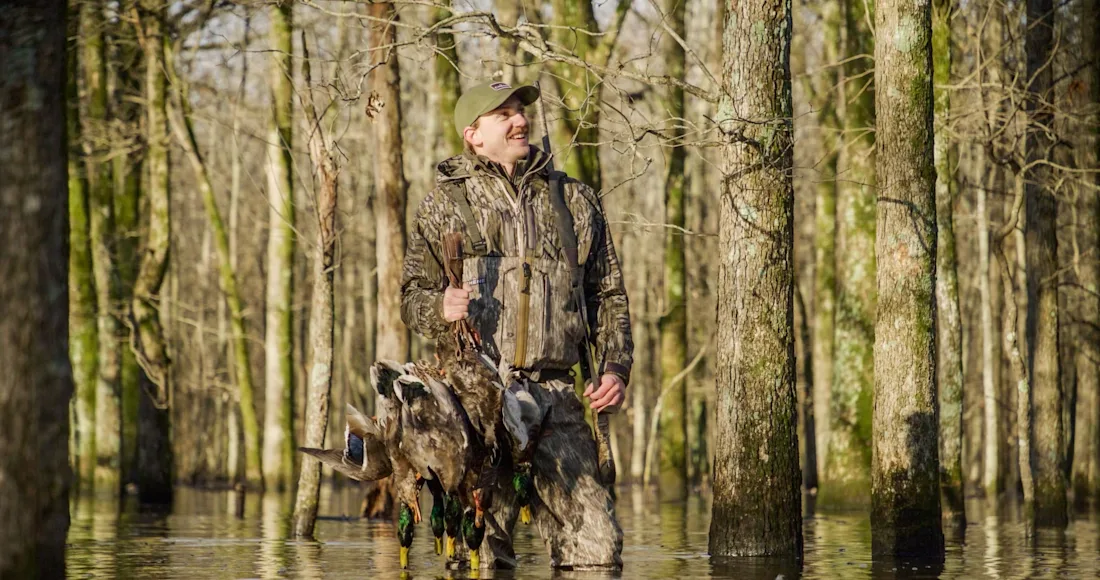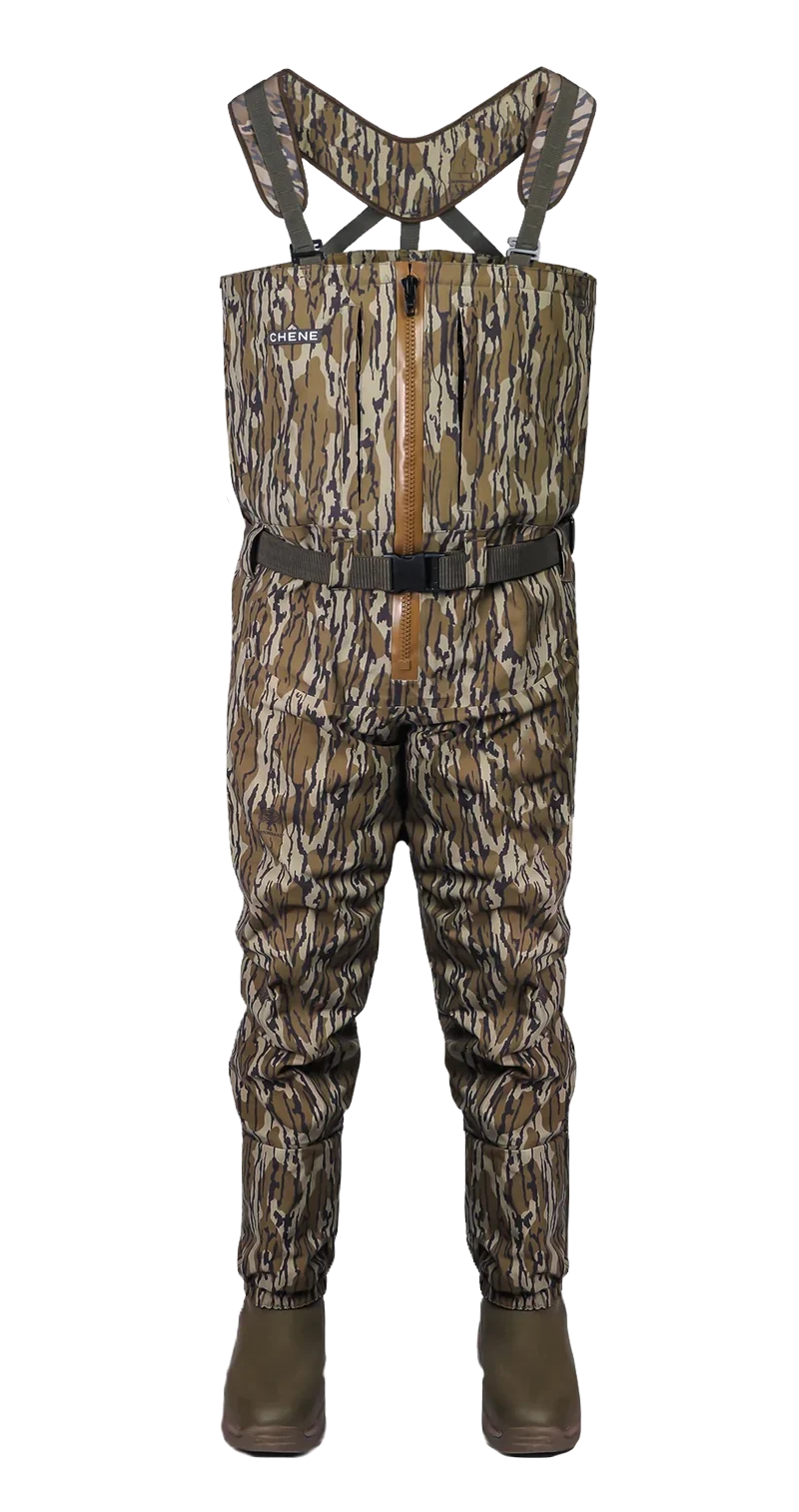We may earn revenue from the products available on this page and participate in affiliate programs. Learn more ›
Dedicated waterfowlers (myself included) usually have no problem splurging on shotguns, decoys, boats, and blinds. If a piece of gear will make a hunt a bit more efficient—we want it. But spending over $1,000 on a pair of Chêne waders will make even the most obsessed duck nuts think twice.
That’s probably the reason you’re reading this review. Is a pair of thousand-dollar waders worth it? To answer that question, I hunted an entire season in Chêne waders. I hiked over 30 miles and sat in -3 degree temperatures in these duck boots. And no matter the situation—boat rides, ice shelves, or blistering heat—the waders came out on top.
Chêne waders are made for the diehard and obsessed waterfowl hunter. And if you’ve made it to this review, you probably fit that category. So here’s everything you need to know about one of the best duck hunting waders on the market.
Chêne Waders
What Is Chêne Gear?
If you haven’t brushed up on your French recently then you’re probably wondering what Chêne means and, more importantly, what does it have to do with duck hunting? The simple translation is Oak—which refers to the flooded timber that southern duck hunters find themselves standing in every winter. The history, culture, and tradition of the flooded woods served as the inspiration for the waders and the rest of the Chêne Gear line.
Based in Memphis, Tennesse, Chêne Gear launched their first wader in 2021. Founders Jeff Jones, Field Norris, Jeff Farmer, and John Strange wanted to design a premium duck hunting wader that was built to last. This started with materials and construction methods that allowed for increased durability. Lead product designer Jeff Jones landed on a waterproof/breathable nylon that allows for seamless construction. This resulted in a better waterproof connection than a traditional stitching design that tends to leak at the seams.
Chêne took it one step further by offering a limited lifetime warranty on their waders. This includes full repairs on any manufacturing defects for the lifetime of the waders. Hunters can also send non-manufacturing damaged waders back to the Chêne headquarters for repair at a reasonable fee.
How I Tested Chêne Waders
I first tried on the Chêne waders when they showed up at my apartment this past summer. I was impressed with how comfortable the boots were out of the box and how well they fit. But the hardwood floors of my apartment weren’t the best testing grounds. So I waited until duck season and wore the waders on over 20 hunts in three different states.
I ended my wader test in Arkansas on a flooded timber hunt with the Chêne team. Here I got a firsthand look at the exact environment which inspired the waders. My pair featured the Mossy Oak Bottomland pattern that blended in perfectly with the tall oaks. However, my favorite pattern is the classic Mossy Oak Original Bottomland. Both camo patterns excel in most waterfowl habitats, but I prefer the darker camo. Chêne also features multiple solid patterns. and the Mossy Oak Original Original Treestand pattern.

What I Like About Chêne Waders
During the early season, the waders excelled in 60-degree-plus temperatures. The nylon fabric allowed for a comfortable fit when walking, tossing decoys, and hunting in warmer weather. As the season continued and the temps fell, the waders only got better. It was easy to add layers to adjust for colder temperatures, and I never felt uncomfortable. On a -3 degree hunt in early November—where everything froze—the waders never failed. They didn’t rip, snag, or leak, even when completely covered in ice.
The zippered pockets on the front of the waders are nice to keep your phone and wallet secure, and the handwarmer pockets are perfect for when the flight is slow. I’m an 11 ½ shoe size, and I sized down to an 11, which fit perfectly. Chêne also offers a variety of body sizes to fit all different body types.
What’s more impressive is how comfortable my feet stayed during every hunt. Chêne waders have the most comfortable wading boot I’ve ever worn. The secret to this comfort starts with a neoprene upper that provides good ankle support and a firm fit without being too loose or pinching your foot. I put on more than 30 miles in these waders—which isn’t typical for a sport with more sitting and boat rides than walking. Not once this duck season did my foot pull out of the boot while wading—whether on a soft river bed in Colorado or in the quicksand-like mud of the saltwater bays on Long Island.
You’ll also notice a cover over the upper part of the boot. This was something that seemed unnecessary to me at first, and it wasn’t until I was at the Chêne headquarters in Memphis that lead designer Jeff Jones explained the reasoning for it. Jones informed me that neoprene uppers give the boot support and comfort but are susceptible to abrasions and punctures—the exact area I cut a pepperoni size hole in my last pair of waders. The cover prevents damage to the neoprene upper from underwater debris, sticks, and other sharp objects.
The key ingredient to these boots is an EVA foam insert that sits in between the rubber bottom and upper part of the boot. This midsole is what makes it feel more like a comfortable sneaker than a bulky wading boot—and the secret to staying comfortable while standing next to an oak tree in knee-high water for over six hours. Even with all the hiking, my feet stayed blister-free thanks to the EVA midsoles.

What I Don’t Like About Chêne Waders
My only beef with these waders is the shoulder straps. They are adjustable, but a little awkward to do in the field. There were a few hunts where I noticed my shoulders wanting a bit more room. A stretchy shoulder strap design, like seen in the wading belt, would be a nice improvement. I’d also like to see kneepads in future redesigned models. Kneepads are something I’ve come to cherish and were one of the few things I felt these waders lacked.
Are Chêne Waders Worth Buying?
The most important takeaway after a full season of using the Chêne waders is that they don’t leak. I know it sounds like I’m setting the bar pretty low for $1,000 waders, but the same can’t be said for another pair of premium duck waders I also hunted in throughout the season. So if you’re going to spend over a grand on waders you should probably get ones that will keep you dry.
The zipfront design is extremely useful. It makes it easy to take the waders on and off, add/shed layers, and be efficient when mother nature calls. I also like the stretchy wading belt that provides a snug fit no matter how many layers you have on.
But the shining star of these waders is the boots. The EVA midsole makes these the most comfortable wader boots I’ve ever worn. They aren’t heavy, and your foot stays secure the entire time—a critical aspect of any hunting wader. This comfort and durability are part of the reason Chêne waders earned one of the top slots in our best duck hunting waders roundup.



